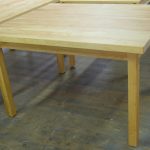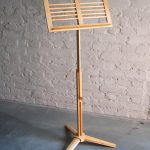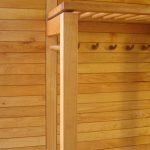
- Harmaaleppä (Fin)
- gråal (S)
- Grauerle (D)
- l´aune (F)
Distribution
- Grey alder is found throughout the whole of Europe, with the exception of its westernmost parts. In Southern Europe it grows in mountainous regions.
- It is a pioneer tree species which grows best in environments with plenty of daylight, with the exception of northernmost Finland.
- In open areas it often spreads too much, and it is not actually utilized for anything but as protective growth for spruces.
Habitat
- Grey alder thrives best in a soil which is calcareous, fertile and moist. There grows into thickets.
- Grey alder often grows on shores, by roadsides and alongside fields and meadows.
- Its roots bind nitrogen from the air and the leaves are green when they fall, so they decompose into quality soil. Thus, grey alder heals the soil well.
- Grey alder endures some amount of shadowing but it does not cope so well with dry conditions.
- In a good habitat grey alder grows fast. It reaches felling size in only 30 years, and, therefore, it does not start to rot.
- When grown densely enough, grey alder becomes quality wood, as the trunk grows branchless and as straight as possible.
Growth characteristics
- Grey alder is a tree or a large bush which grows to as much as 20 meters in height.
- The crown is conical, the trunk smooth and the bark grey. The underside of the leaves is also greyish.
- It has an extensive root system that grows root sprouts and stump sprouts.
- Grey alder is used as a protective tree in forestry. It is a short-lived species which grows very fast when young. However, the best growth is over after 30 years.
- Grey alder reproduces from seeds and shoots.
- A quality grey alder timber has a straight stem free of knots that is over 20 cm in diameter at chest height. The trunk must not have cracks, water sprouts or decay
Properties of the wood
- When grown densely enough, grey alder grows a straight and branchless trunk which is suitable wood for carpenters.
- The wood is reddish and the sap- and heartwood do not have big differences in colour. The time of felling, the growth conditions and the drying process affect the shade of the wood.
- The wood of grey alder is soft and brittle. It is straight grained, even in quality and easy to work and surface finish.
- It is easy to work and split. It shrinks and swells only a little.
- The wood dries quickly. Fresh grey alder rots easily but it becomes more durable once dried. The weight of air-dry sawn timber is 500- 530 kg/m3.
- A special feature is that flame and ”bird eye” patterns sometimes occur.
- A-quality grey alder is even in colour, free of knots and decay. It is used in carpentry, in the production of musical instruments and interior decoration panels.
- B-class wood is used similarly.
- C-class grey alder is used in packaging.

Usage
- Recently, grey alder has been very popular as a raw material for carpentry.
- It is used in carpentry, in the production of musical instruments and decorative items. It is especially suitable for lathing and carving, for decorations and sauna benches. Other uses from the past: wooden shoes, heels, shoe lasts, reels, water pipes, tool boxes, molds for making glass products and hats.
- Alder is also excellent as firewood and smoking chips.






